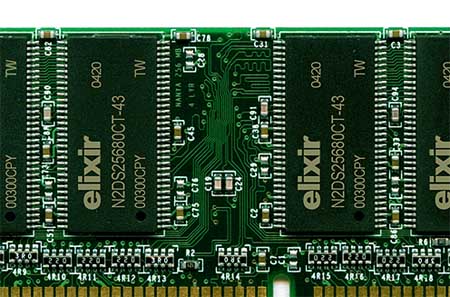When PCB layout is performed, such a situation often occurs. When a route passes through a certain area, since the wiring space of the area is limited, a finer line has to be used. After passing through this area, the line is restored to the original width. Changes in the width of the traces cause impedance changes and therefore reflectance, which affects the signal. So under what circumstances can this effect be ignored, and under what circumstances must we consider its impact? There are three factors related to this effect: the size of the impedance change, the signal rise time, and the delay of the signal on the narrow line.
First discuss the size of the impedance change. Many circuit designs require that the reflected noise is less than 5% of the voltage swing (this is related to the noise budget on the signal), based on the reflection coefficient formula:
Ï=(Z2-Z1)/(Z2+Z1)=ΔZ/(ΔZ+2Z1)≤5%, the approximate rate of change of impedance can be calculated as: ΔZ/Z1≤10%.
As you probably know, the typical indicator of board impedance is +/-10%, and the root cause is here.
If the impedance change only occurs once, for example, after the line width changes from 8mil to 6mil, it remains 6mil width. To achieve the noise budget requirement that the signal reflection noise at the mutation does not exceed 5% of the voltage swing, the impedance change must be less than At 10%, this is sometimes difficult to achieve. Take the case of the microstrip line on the FR4 plate as an example. Let's calculate it. If the line width is 8 mils, the thickness between the line and the reference plane is 4 mils, and the characteristic impedance is 46.5 ohms. After the line width was changed to 6mil, the characteristic impedance became 54.2 ohms, and the impedance change rate reached 20%. The amplitude of the reflected signal was inevitably excessive. As to how much the signal is affected, it is also related to the signal rise time and the delay of the signal from the driving end to the reflection point. But at least this is a potential problem. Fortunately this can be solved by impedance matching termination.
If the impedance change occurs twice, for example, after the line width changes from 8mil to 6mil, after pulling out 2cm and then changing back to 8mil, then reflection occurs at both ends of the 2cm long 6mil wide line, once the impedance becomes larger and the positive occurs. Reflection, then the impedance becomes smaller and negative reflection occurs. If the interval between reflections is short enough, the two reflections may cancel each other, reducing the effect. Assuming that the transmission signal is 1V, 0.2V is reflected from the first positive reflection, 1.2V continues to be transmitted forward, and -0.2*1.2 = 0.24v is reflected back by the second reflection. Assuming that the length of the 6 mil line is extremely short and that the two reflections occur almost simultaneously, the total reflection voltage is only 0.04 V, and the noise budget is less than 5%. Therefore, whether this reflection affects the signal has much influence on the delay at the impedance change and the signal rise time. Studies and experiments have shown that as long as the delay at impedance change is less than 20% of the signal rise time, the reflected signal will not cause problems. If the signal rise time is 1 ns, then the delay at impedance change is less than 0.2 ns for 1.2 inches, and reflections will not cause problems. In other words, for the case of this example, there is no problem if the length of the 6 mil wide trace is less than 3 cm.
When the PCB trace width changes, it is necessary to carefully analyze the actual situation, whether it has an impact. There are three parameters that need attention: how large is the impedance change, what is the signal rise time, and how long the neck portion of the line width changes. According to the above method to roughly estimate, leave a certain margin. If possible, try to reduce the length of the neck.
It should be pointed out that in actual PCB processing, the parameters cannot be as accurate as in the theory. The theory can provide guidance for our design, but it cannot be copied and not dogmatic. After all, this is a practical science. The estimated value should be properly revised according to the actual situation and then applied to the design.

2 in 1 usb adapter,USB Hubs,USB Hubs 3.0,docking station usb c,best usb hubs
Shenzhen Konchang Electronic Technology Co.,Ltd , https://www.konchang.com